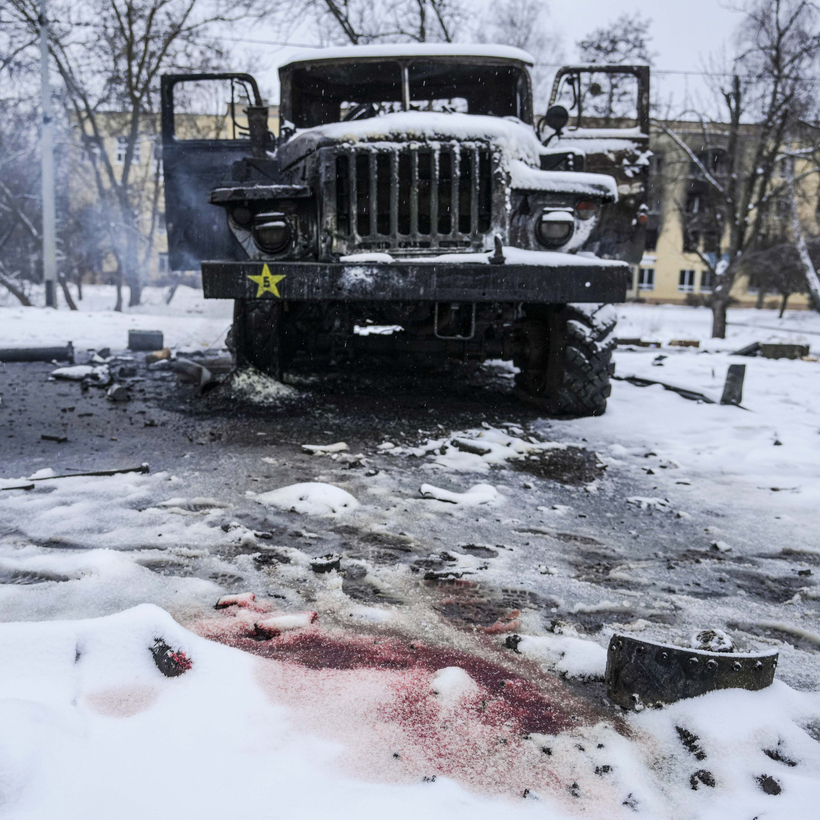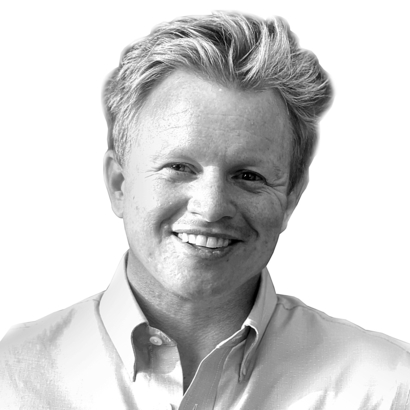They came in from the darkness. Almost two dozen Ukrainian soldiers in full battle gear converged on the dilapidated barn where we were hiding in Kherson, a Ukrainian city about 20 miles north of Crimea, which Putin invaded and annexed in 2014. We were cowering under a cacophony of vintage 20th-century weapons that these men—Ukrainians and Russians—were using to kill each other.
They had all the Cold War classic brands: Grads, SCUDs, R.P.G.’s, AK-47s, Shilka mobile AA systems, BMP-1s, 2s, 3s, and shells from pristine T-72 tanks painted with chalky-white Z’s to distinguish invading Russian tanks from the Ukrainian ones.

It was hard to tell the combatants apart. The weapons look and sound the same on both sides. Then again, the soldiers firing at each other are practically cousins—so close in language and culture and habit that, in normal times, most foreigners can’t distinguish a Ukrainian from a Russian.
As artillery fire and rockets of various acronyms and millimeters rained down, we crouched in the barn, sometimes even beneath it, shivering like rats, tweeting into the dark about the soldiers trying to kill each other. But we were not supposed to actually ask the soldiers why they were doing it. And they were not supposed to ask us why we were watching. That would be a breach of combat etiquette. Killing is O.K. But to tweet the incorrect acronym for a missile system is an unforgivable faux pas.

These are the modern rules of engagement.
Two days earlier, I might have stayed outside to interview those fighters, but the violence and destruction stopped me. I still knew who the invading enemy was, but in the dead of night, I knew these men, too, were to be feared.
Tuesday Before the Invasion
On the morning that the Russians swept in, I had woken up in Mariupol after a 20-hour train ride from Odessa. Mariupol is a port city just southwest of one of the Putin-proclaimed “independent” territories in Ukraine.
It felt like I was waking up in occupied territory. We had spent the previous day embedded with Third Force, a volunteer unit of 15 Ukrainian commandos, who claim to be responsible for approximately 25 percent of all confirmed kills for the entirety of 2021. (The figure was confirmed by an independent NGO called “Blue Yellow.”) They all go by code numbers.

The only female member in the group is a gorgeous P.R. woman who films their exploits to post on a social-media channel. She looks like a cross between Rooney Mara and Jessica Jones. The unit’s stockpile of anti-tank, anti-personnel mines, RPG-7s, .50-cal BMG sniper rifles, .338 Lapuas, and God knows what they didn’t show us was mind-boggling.
These guerrilla fighters are big and fierce, but when they hold and stroke their unit’s cat, named Horse, and make jokes about each other, they seem almost sweet, and we felt so safe for that brief moment. Yet now they are insurgents defending one of the most dangerous places in Europe.
The Russians Arrive
Back in our barn, I heard the approaching soldiers speaking Ukrainian and called out, “Слава Україні!” (Glory to Ukraine!), then ducked back inside and rejoined my friend and colleague, the photojournalist Robert Cooper, and our driver, Ivan, in the cold darkness. One time, an elderly local farmer popped in and took cover with us. He left, then later came with a dinner of vodka, a bag of apples, and pickled tomatoes.
That night Russia claimed to have taken Kherson. As jets flew overhead, dropping bombs that shook our shelter, I had the strange sensation of hoping that the fighter jets were Russian, because, at that moment, we were on Russian-held ground and less likely to be targets.

Draped in damp polyester bedding in a vain attempt to stay warm, the three of us and the farmer tried to sleep to the sound of Russian jets bombing Ukrainian fighters, who eventually took back the bridge we had to cross to make it to Odessa. That night, sitting in darkness as the others slept, typing my story out on my phone—I feared the glow of my laptop might draw sniper fire—I felt like a wet rat. I’d never been less human.
The next morning, the fighting had moved on. In the silence, we stared at corpses splayed around the skeletons of mutilated tanks.
When we passed the nude upper torso of a man who had been left in the middle of the lane on the bridge, most likely by the Ukrainians as a warning to the Russians, Ivan began to weep. We were pulled over by a young sentry with a wild look in his eyes. He attempted to talk to Ivan while pointing his AK-47 at me.

I knew I should have been more scared and alert, but all had been dulled. I was not a person; I was still a rat. In a way, the world was more simple. The sun was warm on my face. Later, we were told the Russians had taken control of the bridge from Ukrainian forces, maybe half an hour after we crossed it.
We knew the Odessa we were returning to would not be the same Odessa we had left.
Putin said Ukraine is not a country. He called it a historical mistake that belonged to Russia. But Ukraine has 44 million people and pretty much all of them are pissed off. Now the guerrilla war begins.
Will Cathcart is a journalist based in Tbilisi, Georgia. He covered the 2014 revolt that led to the overthrow of the pro-Moscow government of Ukraine


